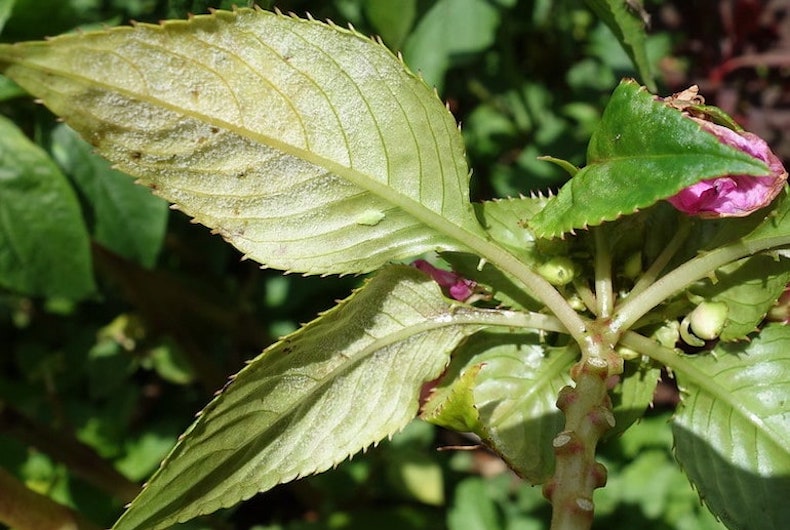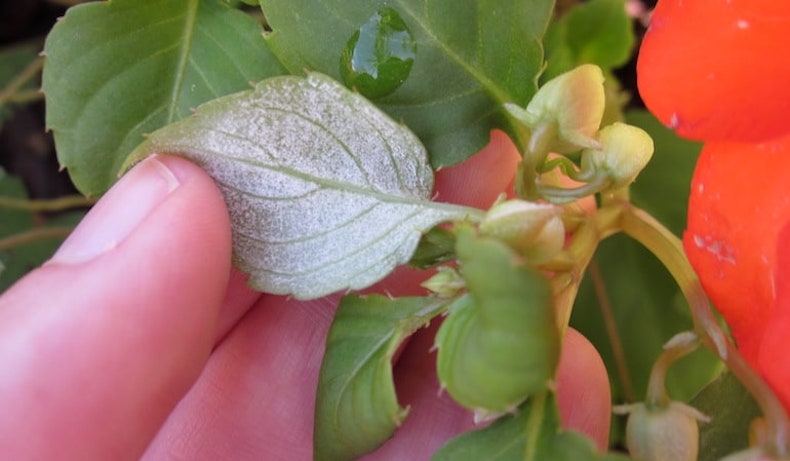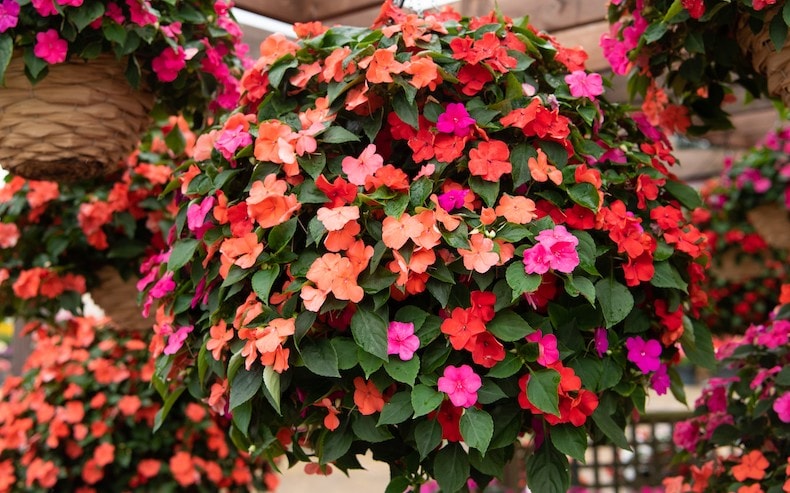Garden diseases - Downy Mildew

Keep your eye out for downy mildew
Image: Scot Nelson/Shutterstock
Downy mildew is a fungus-like organism which infects busy lizzies, often remaining undetected for some time before causing plants to shed foliage and flowers, leaving nothing but bare stalks with tufts of yellowing leaves at the tips. Eventually, the plant will die and quickly rot down into a slimy mess.
This disease is common especially during wet summers – identify it by checking for white ‘downy’ mildew appearing on the underside of leaves. Should downy mildew strike, swiftly root out and destroy affected plants by burning or burying to at least 50cm deep.
What is downy mildew?
The downy substance which indicates the presence of downy mildew looks like a fungus but is actually a close relative of the disease which causes tomato and potato blight – an oomycete called Plasmopara Obducens. The organism first appeared in the UK in 2003 when it was imported into the country on seeds and cuttings. Although attempts were made to control its spread, a big outbreak in 2011 saw downy mildew become widely distributed.
Fortunately, the disease doesn’t seem to affect wild-growing forms of busy lizzie, nor New Guinea varieties, but for the most common cultivars – some of our favourite bedding plants – downy mildew has become a real problem made worse by the fact that the disease is resistant to commercial fungicides.
How do I recognise downy mildew?

Check the underside of the leaf for telltale signs of downy mildew
Image: Laura Sanagorski
Downy mildew can infect plants quite some time before there are visible signs of it, and because its spores drift on the wind or spread via contaminated rainwater, you can sometimes have quite a serious problem without realising it.
It’s a good idea, therefore, to check regularly the underside of leaves for telltale signs of the disease – the fluffy white substance which gives the disease its name.
Is there any cure for downy mildew?
Should your bedding plants contract downy mildew, your only option is to dig them up and either burn or deep bury them. It’s very important not to compost afflicted plants as the spores will survive in the damp conditions of the compost heap, only to reinfect plants next year.
Downy mildew produces two kinds of spores – spores that drift in the wind, and spores which reside inside the tissue of the plant. While the former are quite fragile, the latter remain viable for some time – if you get downy mildew, it’s important to rest the soil for at least a year before attempting to grow busy lizzies in the same spot again.
If growing busy lizzies in pots and containers, destroy diseased plants and soil before washing and disinfecting receptacles. If you’re worried about a recurrence of downy mildew, just use the pots to grow something else next year – downy mildew only affects busy lizzies.
Disease resistance

Grow disease resistant varieties
Image: Busy Lizzie 'Beacon Salsa Mixed' from Thompson & Morgan
Plant breeders have been busy creating disease resistant strains of busy lizzie – like Imara. New Guinea varieties like Devine Mixed and Sunpatiens are also unaffected.
If you prefer to continue to grow traditional varieties, growing from seed eliminates the risk of transplanting downy mildew from the nursery into your garden. Do bear in mind that because downy mildew spreads via spores distributed on the wind, your plants may still be infected by diseased busy lizzies in neighbouring gardens and further afield.
Downy mildew is a common problem affecting traditional varieties of busy lizzie, but by switching to resistant varieties and those which are immune to the disease, it’s still possible to enjoy this wonderful bedding plant.
How to beat downy mildew on busy lizzies: quick video guide
Other pages you might like
See all pests & diseases guides
Individual guides
Diseases
- Apple scab
- Bacterial canker
- Blackleg
- Blossom wilt
- Botrytis
- Brown rot
- Clematis wilt
- Fungal disease
- Honey fungus
- Leaf scorch
- Leaf spot
- Leek rust
- Lily disease
- Peach leaf curl
- Pear rust
- Phytophthora root rot
- Potato & tomato blight
- Powdery mildew
- Silver leaf fungus
- Tomato greenback
- Tomato leaf curl
- Tomato stem canker







